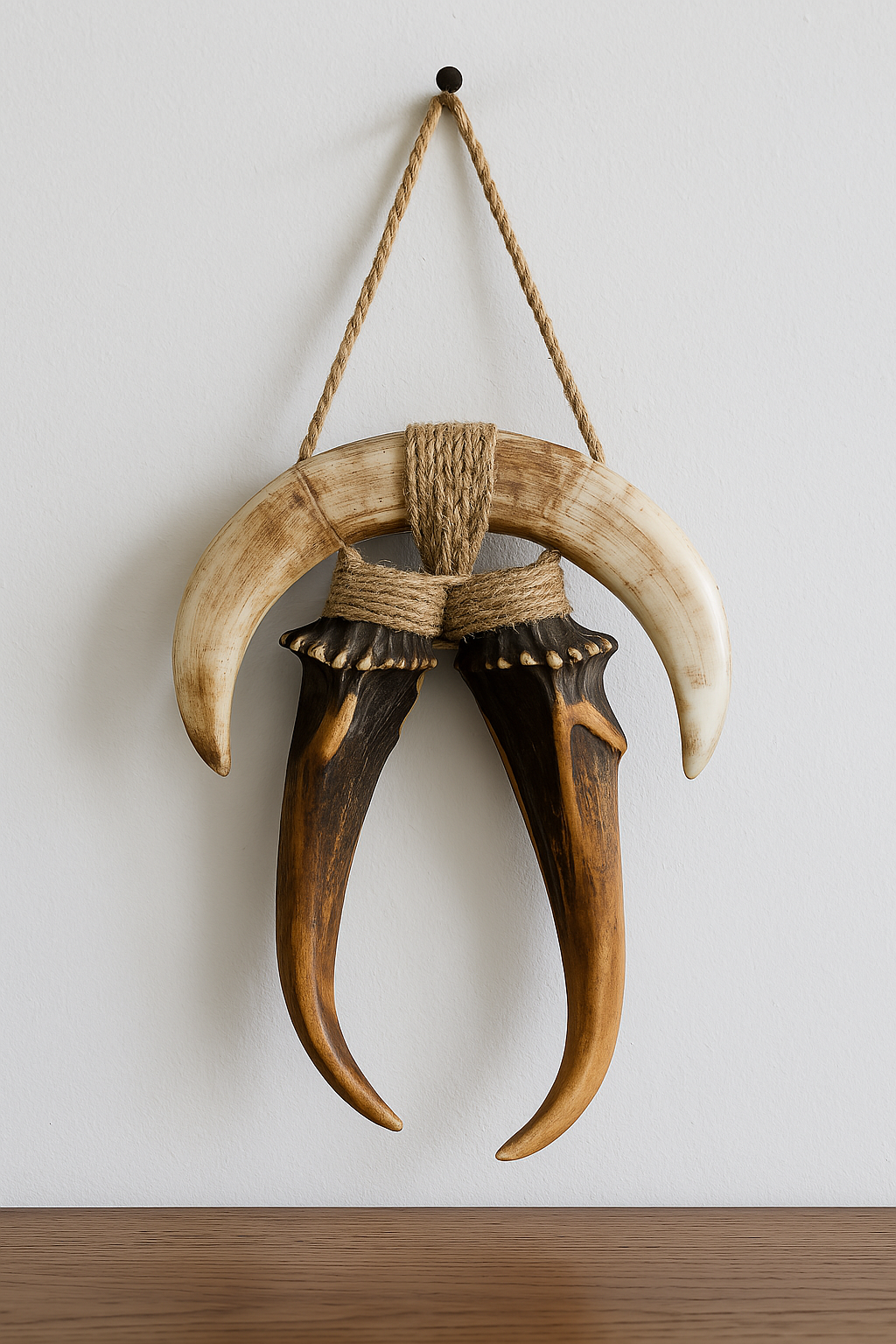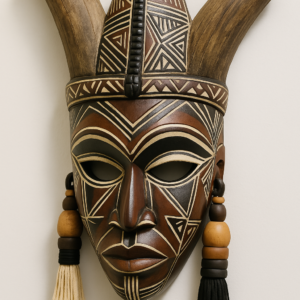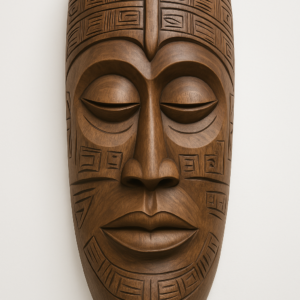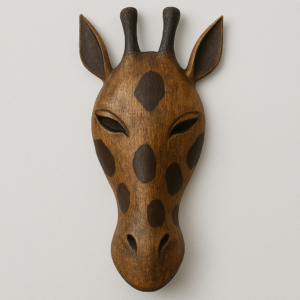“Ngome Ya Pori,” meaning “The Wild Fortress” in Swahili, is a formidable artifact embodying raw power, tribal honor, and the spiritual guardianship of untamed nature. Crafted with a fusion of natural horn, bone-like tusk material, and hand-bound fiber rope, this piece channels the primal strength of the African wilderness while honoring ancestral craftsmanship. More than just a symbolic ornament, Ngome Ya Pori is an ancestral weapon of identity—a talisman meant to guard, invoke, and connect.
Rooted in the traditions of Central and Eastern African hunting and warrior societies, this object would have been worn or displayed by clan protectors, elite trackers, or spiritual intermediaries. While not a mask in the conventional sense, its sculptural presence and ritualistic construction place it firmly within the domain of African totemic art. Its horns and tusks, bound tightly by woven fiber rope, signify the containment of chaos, the discipline of wild power, and the unity of the animal kingdom with human will.
The visual form of Ngome Ya Pori consists of four natural elements—two long, inward-curving tusks (possibly shaped from synthetic ivory or actual bone), and two downward-pointing horns, likely buffalo or kudu, aged and burnished for deep tone. These are arranged in a tight formation resembling a warrior’s sigil or a battle crest. The twin horns curve like crescent moons, sharp and deadly, while the tusks mirror them in an inverted arc—together forming a circular motion of flow and defense, a loop of continuity and balance.
The entire structure is lashed together with thick natural fiber rope, cross-tied in a lattice that adds not just aesthetic beauty but ritual function. In many African belief systems, rope and knotting are spiritual technologies used to bind forces, protect spirits, and seal ancestral pacts. The bindings in Ngome Ya Pori are therefore more than structural—they are symbolic seals, connecting the spirits of animal strength to human control.
Hanging from a single reinforced cord, this piece is designed for elevation. Whether suspended in the entrance of a home, from a shrine wall, or from the neck of a warrior during sacred ceremony, it is meant to hover—watching, protecting, and declaring strength silently. The positioning of its form ensures that no matter the angle it is viewed from, it exudes symmetry, readiness, and aesthetic authority.
The patina of the materials is rich and authentic. The horns are worn smooth by time and hand, with deep earthen browns merging into blackened ridges. The tusks retain a lighter hue—ivory and bone whites marbled with tan age spots. The rope bindings, slightly frayed, speak to manual mastery and functional permanence. Together, they create a tactile contrast that invites both visual admiration and spiritual contemplation.
In a traditional context, a piece like Ngome Ya Pori could have been used as a protective fetish, a ceremonial ornament for chieftains, or a hunt talisman worn during rites seeking ancestral blessings before going into the wilderness. It would serve as a symbol of earned authority—not given, but forged through trials, sweat, and spirit negotiations.
In modern interior spaces, Ngome Ya Pori becomes an architectural accent of primal integrity. It blends seamlessly with minimalist environments, rustic settings, or curated ethnographic collections. It anchors a wall with visual gravity, turning blank space into a portal of cultural storytelling. Its form suggests that though humanity may evolve, our roots are guarded by the wild, and our homes are sanctified by the ancestors of the land.
Collectors of tribal objects, curators of ritual design, and lovers of African aesthetics will find in Ngome Ya Pori not just a decoration, but a declaration of unity between the human and the primal. It is a reminder that the spirit of the forest, the mountain, and the predator lives not outside us, but within—awaiting invocation.







Reviews
There are no reviews yet.